- How to take great photos of pets (dogs and cats) We go over the key points on shooting techniques and lens choices for interchangeable lens cameras
How to take great photos of pets (dogs and cats) We go over the key points on shooting techniques and lens choices for interchangeable lens cameras
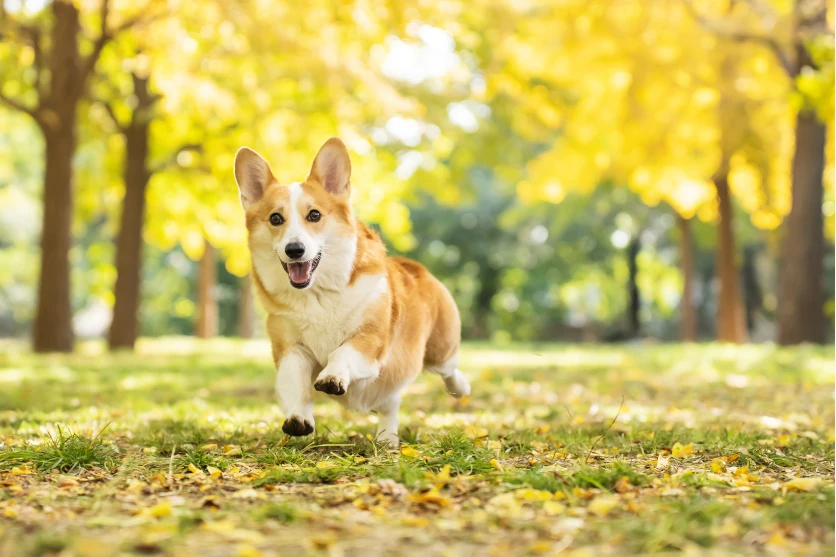
Perhaps many of you starting shooting with an interchangeable lens camera because you want to take adorable pictures of a pet (cat, dog, etc.) and want to preserve those memories. But when you actually start to take photos, there might be situations where your photos don’t turn out the way you had hoped. In fact, by getting to grips with just a few key tips, you might be on your way to taking shots skillfully. In this article we will go over some of those tips to put into practice when taking photos of pets. We will also share some wisdom on lens choices and how to shoot in different scenarios.
How to take great photos of pets (dogs and cats)
There are several tricks to taking great photos of dogs, cats and other pets. To start with, let’s check the perspective used when shooting, the approach to focusing, and how to adjust exposure.
[1] Focus on the eyes
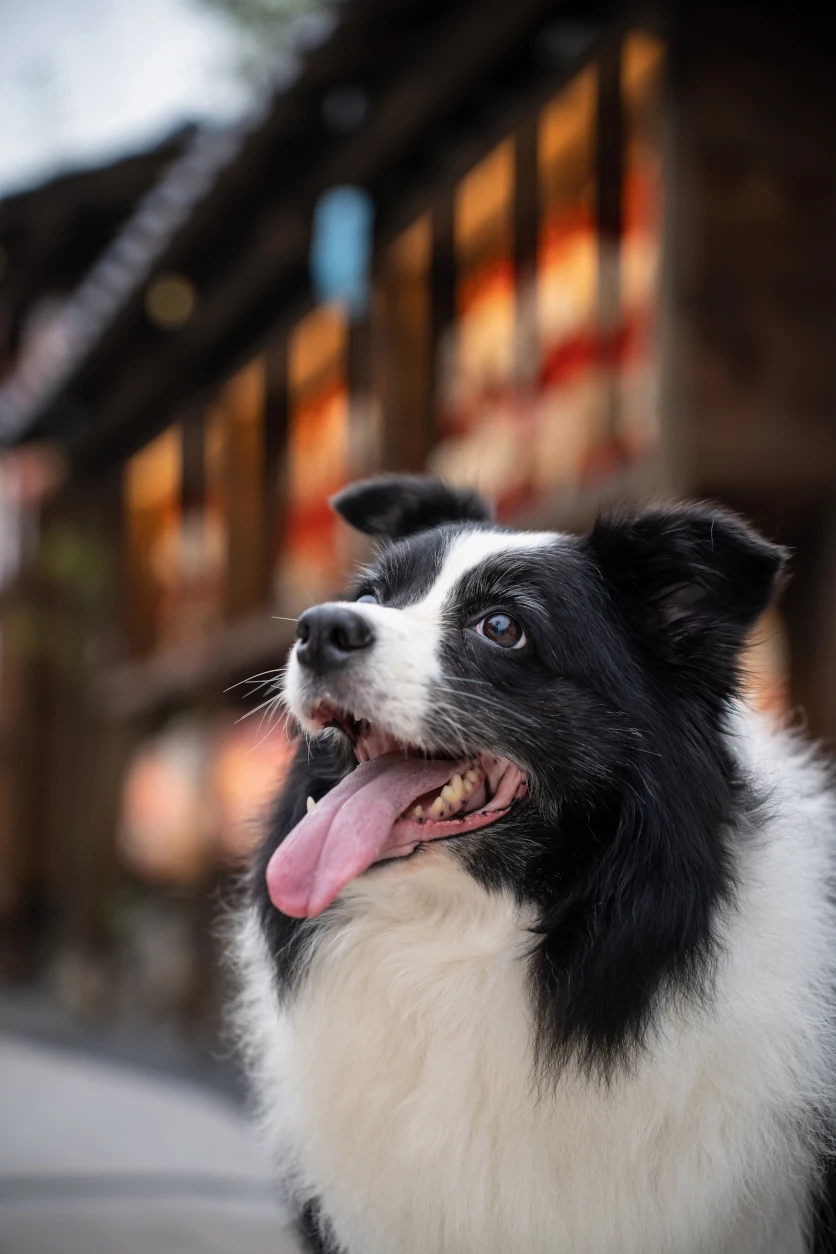
Focal length: 75mm Exposure: F2.8 Shutter Speed: 1/500sec ISO: 400 Camera: Sony α7R IV
When shooting expressions on the faces of cats and dogs, since the face is three-dimensional, sometimes the camera will focus on the tip of the nose or the ears, causing the expression of the pet to be blurred. That’s why we recommend focusing on the eye that is closest to the camera, and when doing so to imagine focusing slightly from the center to the top of the eye. This makes it easier to bring the pet’s entire expression into focus and allow you to take shots that present a natural image.
Eye AF features equipped in some camera bodies are also useful. Using this feature, the camera body will automatically focus on the area around the pet’s eye. This will make it easier to capture adorable expressions of your pet.
[2] Shoot from a low angle at the pet’s eye level

Focal length: 400mm Exposure: F6.3 Shutter Speed: 1/1250sec ISO: 800 使用カメラ: ソニー α1
When shooting, pay attention to the position you have the camera in. Shooting from a position that is higher than a pet trends to produce monotonous photos and images that look small in scale. We recommend setting up the camera at the pet’s eye level. Additionally, by incorporating a background and bokeh, you can take more lively photos.
When you shoot at a low angle (pointing the lens upwards from a lower position), you can produce dynamic images. Try out a range of shooting positions and angles and look for even better expressions of your pet.
In addition, when you want your pet to turn their eyes toward the camera, you can also try to attract their attention by calling their name, making a sound, clapping and so on. In terms of backgrounds, you can produce more memorable images by matching it to the pet’s image.
[3] Get creative with direct light and back light angles

Focal length: 227mm Exposure: F6.3 Shutter Speed: 1/2000sec ISO: 640 Camera: Sony α9 II
When taking photos, the way the light hits your subject is important. When you want to capture the subject’s expression clearly, photograph under direct light. With direct light, the light hits your subject straight on. However, directly light can be very bright, and may cause your pet to squint. That’s why we recommend getting creative with different angles and orientations when you shoot, as well as making use of shade when appropriate.
On the other hand, back light is the situation where light his your subject from behind. With back light, your subject is less likely to squint, and as the subject will be surrounded in a gentle light, you can produce a warm and dramatic mood. However, when the background is bright, the expression of your pet may be too dark. Be careful of this potential disadvantage when shooting. Make adjustments by adding exposure compensation so that the expression of your subject is visible.
One expressive technique is to capture a sparkling white light (catch light) in the eyes of your pet to further bring out their expression. While catch lights are easier to produce when working with direct light, when working in back-lit conditions try to get creative such as getting the ground or a white wall to reflect light into the subject’s eyes.
[4] Adjust exposure and bokeh
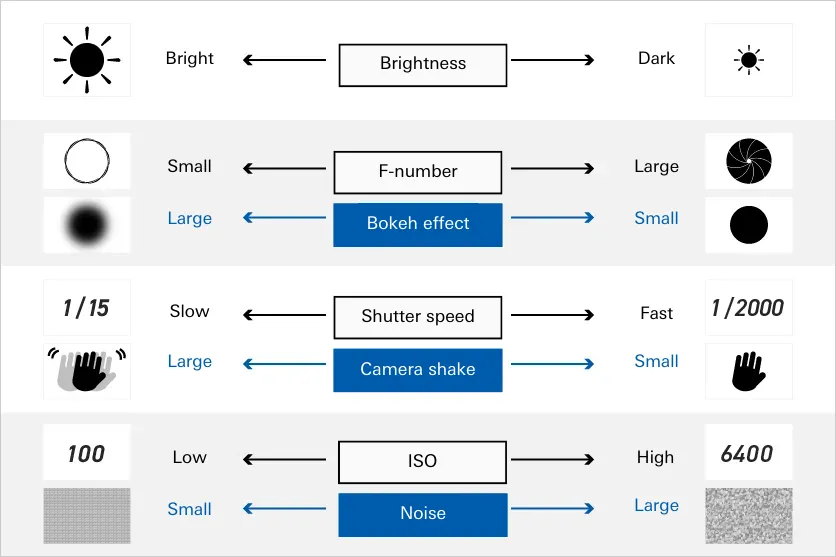
The brightness (exposure) of a photograph is determined by three elements, the f-stop, shutter speed and ISO sensitivity. Pets move around a lot and their expressions are three-dimensional in nature, making it important to adjust shutter speed and f-stop settings to take bright photos of them. That’s why we are now going to look at how to adjust exposure.
F-stop (aperture)
The f-stop is a number indicating the amount of light that enters the lens. As the aperture is stopped down (narrowed), the f-stop number goes higher, and as the aperture is widened, the f-stop number falls. That is why at a low f-stop value a large amount of light enters the lens and there is a greater amount of bokeh, and in reverse, a large f-stop value reduces the amount of light, and also decreases the amount of bokeh. A state where the aperture of a lens is as large is possible is referred to as its maximum or wide-open aperture, and this also represents the lower limit of its f-stop value.
Generally speaking, when you want to take a photo typical of an interchangeable lens camera, where there is a lot of bokeh behind the subject, set a low f-stop value. In addition, when shooting in conditions with minimal light, such as under shade or indoors, you can increase the amount of light the lens takes in as much as possible by lowering the f-stop. However, if you want to clearly capture the expression of a dog or cat, a lower f-stop could make it difficult to focus, resulting in a blurred image. That’s why setting an f-stop value that is slightly stopped down from wide open can help you take images that clearly capture the entire expression of your subject.
Shutter speed
Shutter speed is a value indicating the time during which the shutter is open. As a slow shutter speed such as 1/50 sec. lets in more light, it allows you to take bright photos even in dark locations. However, a disadvantage of this is that photos will be susceptible to blurring due to movement of the subject (subject blur) or from holding the camera (camera shake).
On the other hand at high shutter speeds such as 1/1000 sec., the downside is that less light enters the camera, but it is easier to capture the instant of a moving subject, and both subject blur and camera shake are less likely to occur.
As pets often refuse to stay still, as a basic approach we recommend setting a faster shutter speed. When photographing a pet that is moving relatively slowly indoors, a shutter speed of between 1/250 sec. and 1/500 sec. is recommended, while it is good to aim for up to around 1/1000 sec. if the pet is moving around. If the scene gets too dark, raise the ISO sensitivity to adjust the exposure
Shutter speed
Digital interchangeable lens cameras produce photos by converting light detected by the sensor into electrical signals. The degree to which these electrical signals are amplified at this time is determined by the ISO sensitivity. The higher this is set, the brighter the photo. This is why when there is insufficient light, a higher ISO sensitivity is set. However, as noise levels can increase when the ISO sensitivity is set too high, avoiding setting the ISO too high will make it easier to take photos with high image quality.
In clear weather, you can take photos with sufficient brightness at low ISO sensitivity settings even with a fast shutter speed, but in cloudy weather or when shooting indoors, the amount of light tends to be insufficient. Therefore, when shooting in a room, in an indoor dog park or at an outdoor dog park during bad weather, set a higher ISO sensitivity.
Exposure modes
To take photos with high image quality more efficiently, make use of different exposure modes. For example, in aperture priority mode, since the camera automatically adjusts the shutter speed to ensure adequate brightness once you have set an f-stop value, it is well suited to when you want to take photos with an emphasis on bokeh, such as pet portraits.
On the other hand shutter priority mode lets you set the desired shutter speed and automatically adjusts the f-stop to give you proper brightness. Therefore this mode is recommended when you want to take dynamic shots, such as pets that are moving around in a lively manner.
To get even more control over your shots, switch to manual mode and set the shutter speed and f-stop to your liking.
[5] Make dynamic use of the background with a wide-angle lens
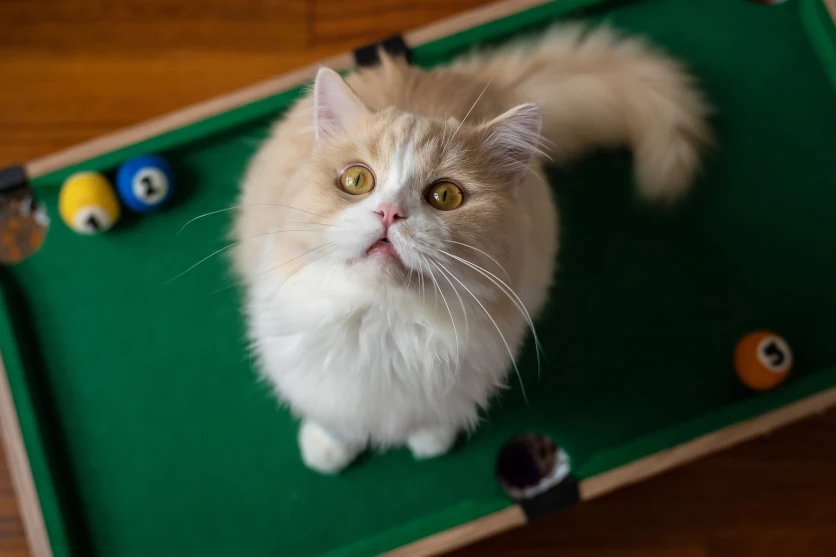
Focal length: 32mm Exposure: F2.8 Shutter Speed: 1/800sec ISO: 500 Camera: Sony α7R IV
A wide-angle lens (or the wide end of a standard zoom lenses) lets you shoot with a wide angle of view, and since there is a large depth of field (the range over which a subject is in focus), you can get elements all the way to the background in focus. Therefore, by photographing your pet within a vast natural area such as grass, flowers or fields, you can produce photos that have a sense of scale.
In addition, the short focal length of a wide-angle lens also allows you to get somewhat closer to a subject and still get them in focus. This allows you to create photos with a dynamic mood, such as getting in close and photographing your pet from a low angle and low position with tall trees or buildings in the background.
[6] Focus on your pet’s facial expressions with a telephoto lens

Focal length: 400mm Exposure: F6.3 Shutter Speed: 1/400sec ISO: 320 Camera: Sony α9 II
A telephoto lens (or the telephoto end of a standard zoom lens) lets you enlarge a distant subject with a narrow angle of view. This enables you to capture the fine details in the facial expression of a pet and the texture of its hair from a distance.
Pets sometimes become alarmed when a lens is pointed at them. For those situations we recommend using a telephoto lens so you can photograph your pet in a relaxed state at a distance where it can let down its guard. Additionally, since a telephoto lens produces compression effects (making distant objects appear closer together), it is also well suited to taking impactful portraits that utilize background bokeh.
Shooting styles for different scenarios
Since we see our pets in a wide variety of locations, we want to preserve the memories of each location through photos. Here we introduce some tips to help you take beautiful photo photos in each shooting scenario.
At home and other indoor locations

Focal length: 29mm Exposure: F2.8 Shutter Speed: 1/320sec ISO: 800 Camera: Sony α7R IV
One of the disadvantages to photographing a pet at home or in other indoor locations is the lack of light. We recommend shooting by a window or with a white wall as a background in order to gather as much natural light as possible. To gather more light you can also widen the aperture of the lens as much as possible, and set a higher ISO sensitivity.
There will also be times when a pet doesn’t feel comfortable indoors and you can’t take the photos you want. At those times it might be best to bring out a toy or pet treats to draw out positive feelings.
While on a walk

Focal length: 75mm Exposure: F2.8 Shutter Speed: 1/800sec ISO: 500 Camera: Sony α7R IV
Taking a walk with a pet offers the chance to take dynamic photos. Hold your camera low to align the height with your pet’s eye level. We recommend taking low angle shots.
With a pet constantly moving around making it difficult for you to keep up with the action by pressing the shutter, you may miss the chance to capture a definitive moment. In those cases we recommend utilizing your camera drive (burst) mode.
As it can be hard to take a photo you like from a single go, we recommend taking several shots in burst mode so you can pick out the best shot later.
In natural environments
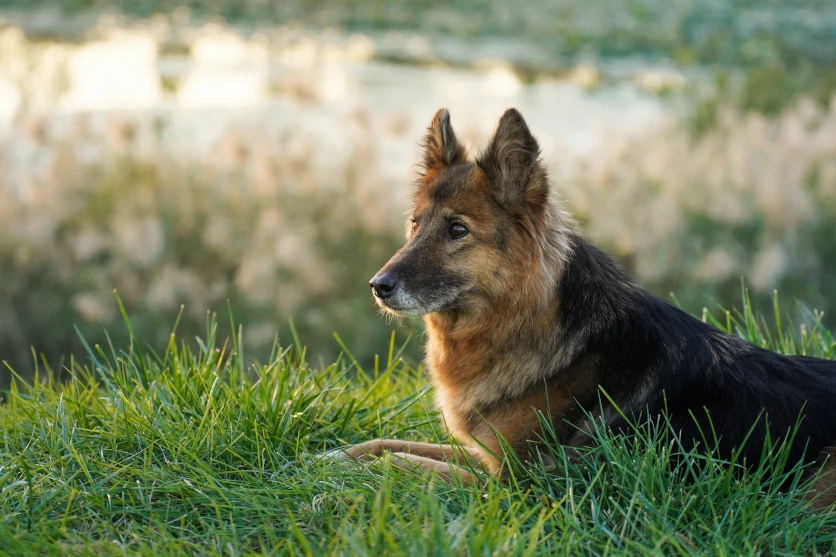
Focal length: 67mm Exposure: F2.8 Shutter Speed: 1/800sec ISO: 800 Camera: Sony α7R IV
Photographing your pet in nature can produce beautiful and vibrant images. For example, try photographing your pet with trees or mountains in the background, or incorporating the water’s edge. If your pet does not stay still, increase the shutter speed and utilize burst mode. In addition, you can take more appealing images by using a telephoto lens and making use of large background bokeh.
You should also experiment with back-lit scenes outdoors. By making smart use of exposure compensation to properly capture the facial expressions of your subject, you can create a dramatic mood.
However, as it can be difficult to discern the expression of the subject if the sunlight is too strong, shooting in the shade is also an effective technique. In cloudy conditions the light becomes milder, making it easier to clearly render the expressions of the subject and creating a smooth and gentle mood.
Choosing lenses best suited to photographing pets (dogs and cats)
To take compelling photos, you want to shoot pets from various positions and angles. But just because you want to take photos doesn’t mean your pet will sit still. That’s why a lightweight, compact and highly portable lens makes it easier to move around while shooting. Compact lenses are also less bulky when you have a lot to carry when going out.
Portability

To take compelling photos, you want to shoot pets from various positions and angles. But just because you want to take photos doesn’t mean your pet will sit still. That’s why a lightweight, compact and highly portable lens makes it easier to move around while shooting. Compact lenses are also less bulky when you have a lot to carry when going out.
Maximum (wide-open) aperture
When pets are moving around a lot, it’s not easy to capture a moment in time. That’s why it’s a good idea to check aspects such as moving object tracking performance to determine whether the AF system can operate fast enough. If your pet is sensitive to noises, you should also check the operating noises made by the AF. To reliably suppress camera shake, we also recommend lenses that come with built-in vibration compensation mechanisms.
Autofocus (AF) functionality and vibration compensation mechanisms
As you want as much light as possible when shooting indoors, we recommend choosing a location where a lot of sunlight can enter, or somewhere with a white background as your shooting point. In addition, opening the aperture of your lens as much as possible will also allow your lens to gather a lot of light. When it is difficult to make those adjustments, you can adapt by raising the ISO sensitivity.
Additionally, if you use a lens with a short minimum object distance, you will be able to take close enough to your subject even in an indoor environment where you cannot move around, such as when photographing a child that is sitting across from you at a table.
Minimum object distance
Minimum object distance is the shortest distance at which you can achieve focus when getting close to a subject. It represents the distance from the subject to the sensor inside the camera. The shorter the minimum object distance, the closer you to get to your pet to take photos. This allows you to focus on specific parts of the pet, and expands expressive possibilities by letting you portray their expressions in bold terms.
Maximum magnification ratio
Maximum magnification ratio represents how magnified your subject is when you are at the minimum focus distance. For example if this value is 0.25x, it means the object is rendered at one-fourth its actual size. When you want to get in close to a pet to express them in more detail, or want to photograph a small pet, a larger maximum magnification ratio will make the subject appear larger.
Moisture-resistant construction
Using a highly durable lens lets you concentrate on taking pictures with peace of mind. The moisture-resistant construction of TAMRON lenses applies moisture-resistant sealing to various parts of the lenses to stop moisture getting in from the outside. In addition, sometimes a pet will lick a lens when they get close to it. If the front element of the lens has a fluorine coating (dust-resistant coating) applied, any blemishes can be easily wiped away.
Master these key points to take compelling pet photos!
In this article we went over several tips on how to take great photos of pets. When you get creative with focusing techniques, exposure, bokeh and composition, you will be able to take photos that have something unique about them. Start by positioning your camera down at the eye level of your pet and taking a lot of pictures.
Lenses Featured in this Impression
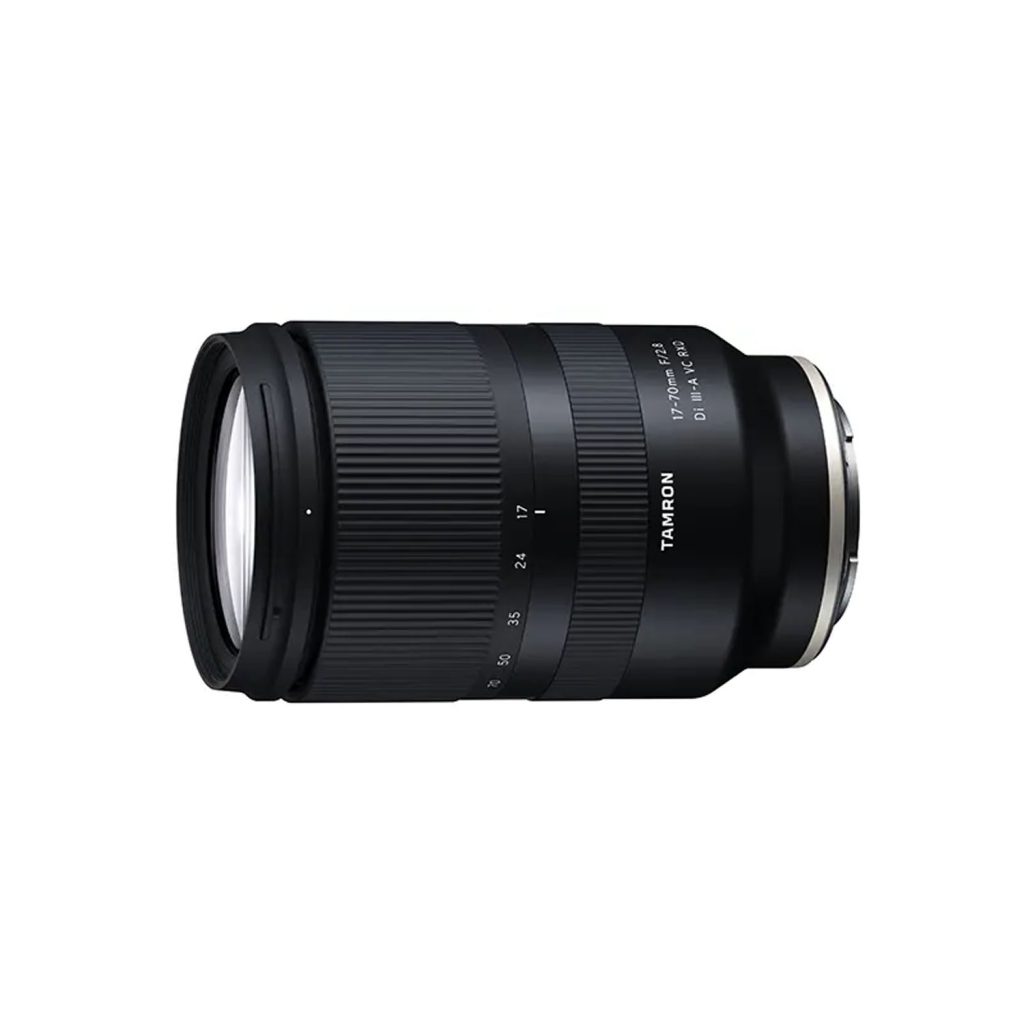
17-28mm F/2.8 Di III RXD (Model A046)
The 17-28mm F/2.8 Di III RXD (Model A046) achieves a filter diameter of ø67mm, which is surprising for a large aperture ultra wide-angle zoom lens for full-frame cameras. It’s small and light weight with a good camera balance. It's a dedicated lens for mirrorless interchangeable -lens cameras that can be carried easily and can be used in various situations.
Learn more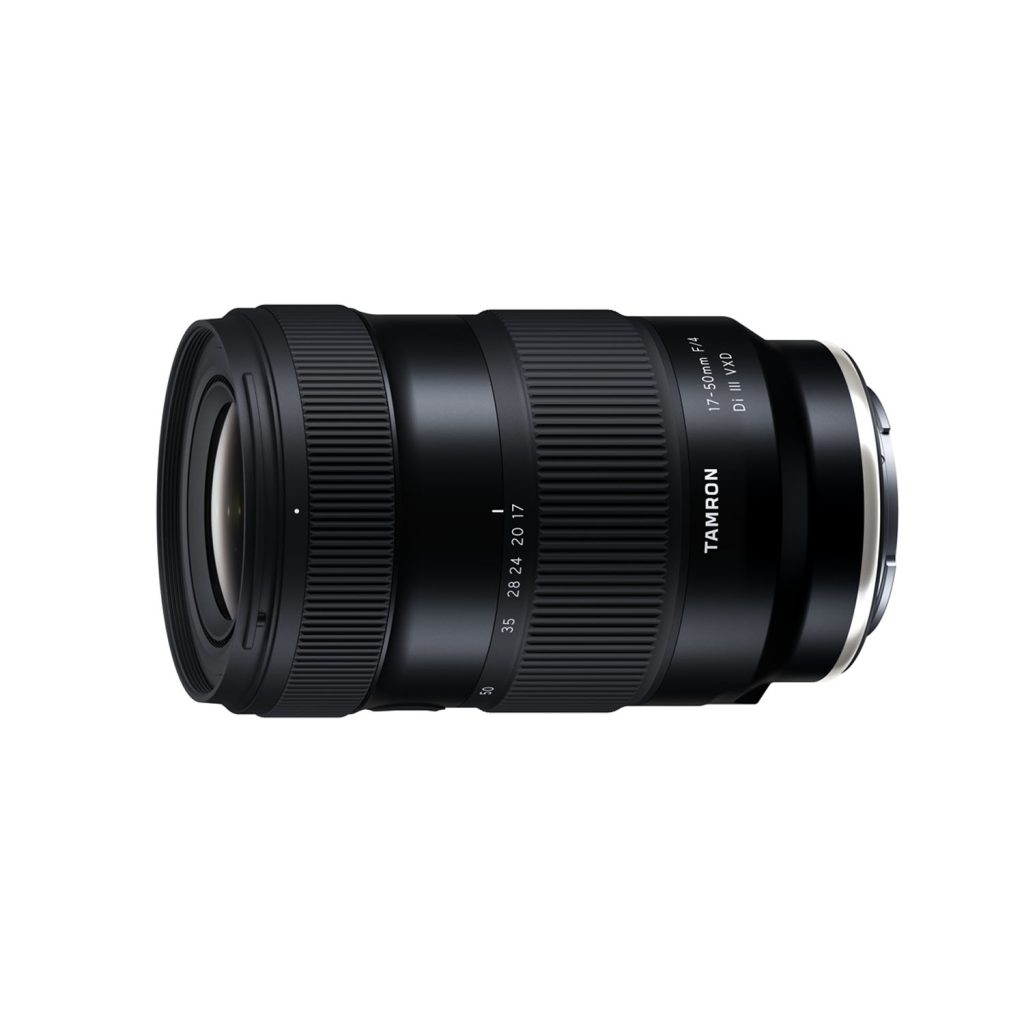
17-50mm F/4 Di III VXD (Model A068)
It's the world’s first lens covering from ultra wide-angle 17mm to the standard 50mm focal length. The highly-compact TAMRON 17-50mm F/4 Di III VXD (Model A068) for Sony E-mount full-frame mirrorless cameras offers maximum versatility for still and video creators. From landscapes to living rooms, this lens captures all that you see.
Learn more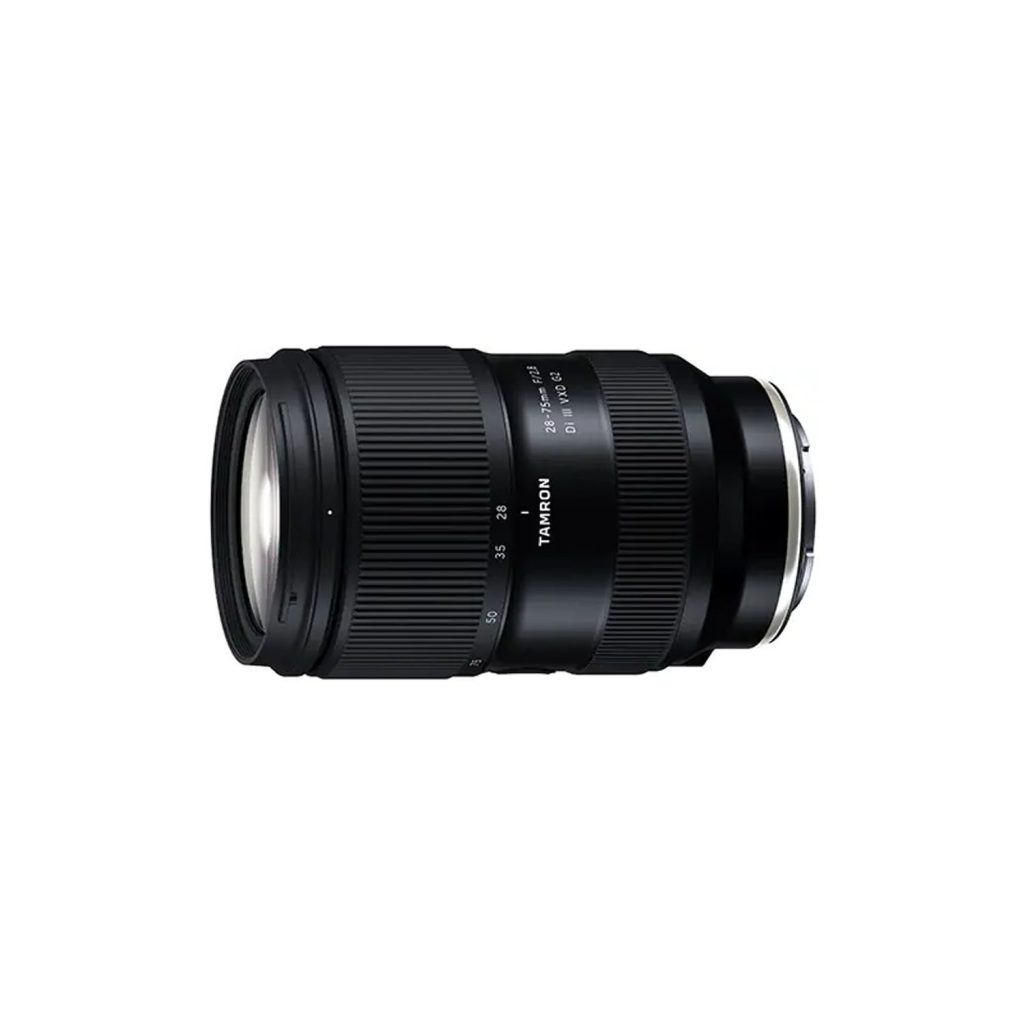
28-75mm F/2.8 Di III VXD G2 (Model A063)
28-75mm F/2.8 Di III VXD G2 (Model A063) is the second-generation fast-aperture standard zoom lens for Sony and Nikon full-frame mirrorless cameras, offering significantly improved optical and autofocus performance and new function customization.
Learn more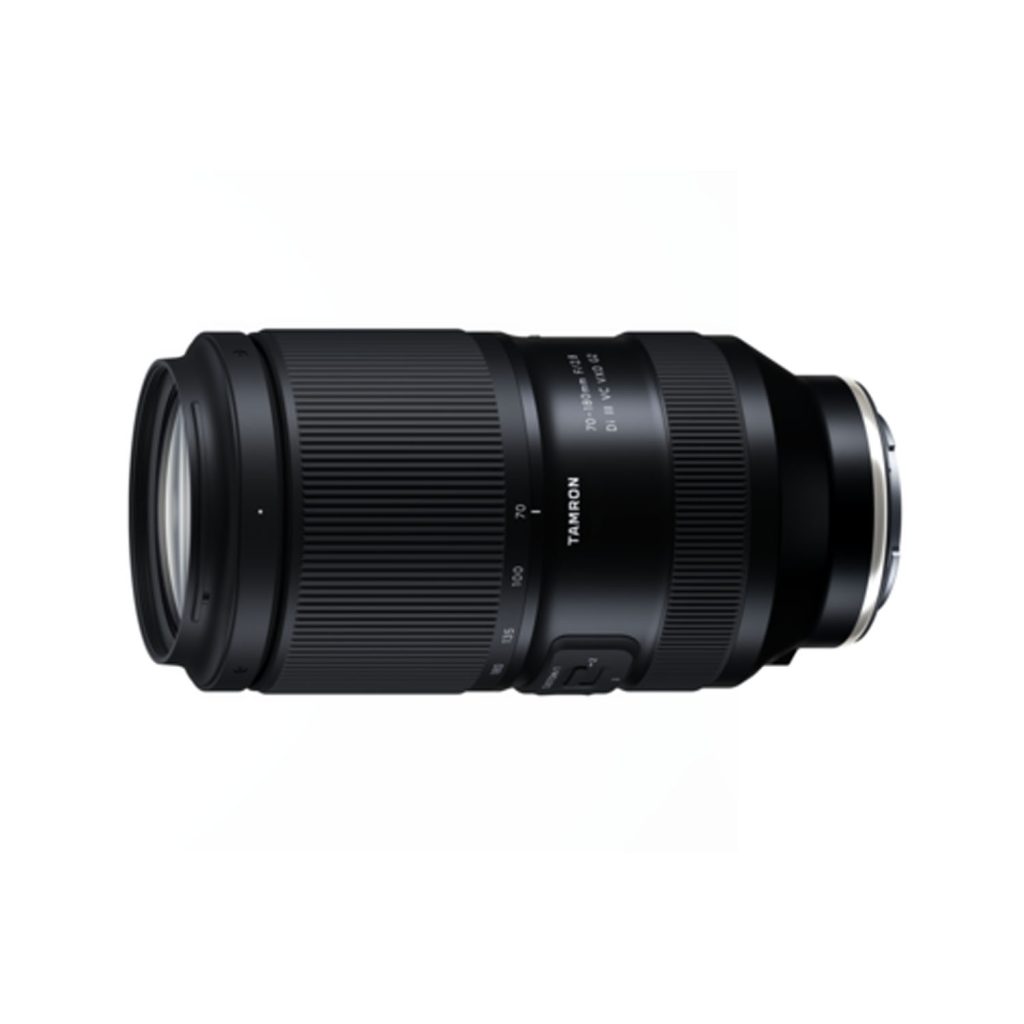
70-180mm F/2.8 Di III VC VXD G2 (Model A065)
70-180mm F/2.8 Di III VC VXD G2 (Model A065) has evolved to G2 level.This is the world’s smallest and lightest, fast-aperture telephoto zoom lens for Sony E-mount with astounding portability and superb image quality.
Learn more
70-300mm F/4.5-6.3 Di III RXD (Model A047)
The 70-300mm F/4.5-6.3 Di III RXD (Model A047) for full-frame mirrorless cameras is a telephoto zoom lens designed and created so photographers of all skill levels can enjoy high quality images comfortably. The 70-300mm F4.5-6.3 covers a broad telephoto zoom range yet is the small and lightest weight. With special emphasis on resolving power, TAMRON has deployed special lens elements appropriately arranged to correct chromatic aberration, generally very strong in a telephoto lens, as well as other aberrations. Users can enjoy high-resolution images combined with stunning bokeh qualities that are achievable only with a telephoto lens. The lens also incorporates the RXD, a high-speed precision AF drive system that is remarkably quiet. The 70-300mm F4.5-6.3 is a versatile lens for photographing landscapes, sports and other action, pets, wildlife, and more. The lens also demonstrates its potential for portrait shooting, casual snapshots, and scenarios that require you to be mobile and shoot handheld, like sporting events.
Learn more

